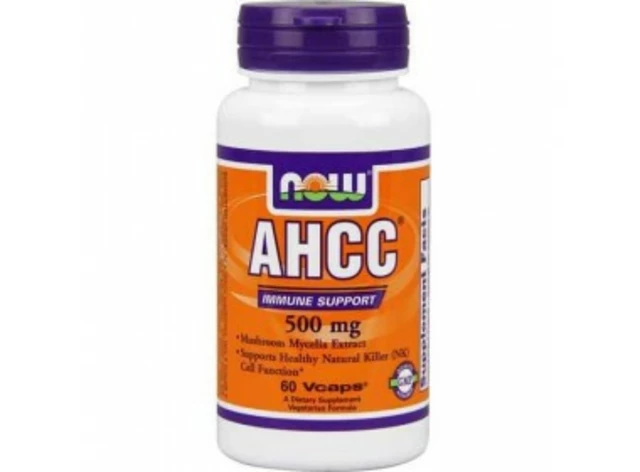
BPH Medication Risk Calculator
Assess Your Risk
Enter your details to calculate your risk of urinary retention when taking bladder medications.
Your Risk Assessment
When a doctor prescribes a pill for an overactive bladder, most patients expect fewer leaks and fewer nighttime trips. What’s less obvious is that the same medication can turn a manageable bladder into a dangerous, full‑bladder emergency - especially for men whose prostate is already blocking the flow. This article untangles why anticholinergic drugs can amplify prostate‑related urinary problems, what the data say, and how to keep the situation from spiraling into acute retention.
Quick Takeaways
- Anticholinergics relax the bladder’s detrusor muscle, which can trigger retention in men with benign prostatic hyperplasia (BPH).
- Up to 10% of urinary‑retention cases involve a medication, and anticholinergics account for a sizable slice of that number.
- Alpha‑blockers, 5‑alpha reductase inhibitors, and beta‑3 agonists are safer first‑line options for men with prostate enlargement.
- Screening tools - digital rectal exam, uroflowmetry, and post‑void residual measurement - help identify high‑risk patients before a drug is started.
- If retention occurs, immediate catheterization plus early alpha‑blocker therapy improves the chance of a successful voiding trial.
What Are Anticholinergics?
Anticholinergics are medications that block muscarinic receptors in the bladder’s detrusor muscle, reducing involuntary contractions that cause urgency and frequency. Common agents include oxybutynin, tolterodine, darifenacin, solifenacin, trospium, and fesoterodine. They are the cornerstone of pharmacologic therapy for overactive bladder (OAB), yet none of the currently marketed products isolates their action to the bladder alone, leading to systemic side effects such as dry mouth, constipation, blurred vision, and, crucially, difficulty urinating.
How Anticholinergics Can Lead to Urinary Retention
Bladder emptying is a coordinated dance: the detrusor muscle contracts while the internal sphincter relaxes. Anticholinergics blunt the detrusor’s contractility, which is fine when the urethra is open. In men with an enlarged prostate, the urethra is already narrowed. Add a drug that weakens the bladder’s push, and the flow can stop altogether - a classic “double‑hit” scenario.
The American Urological Association (AUA) defines urinary retention as the inability to empty the bladder, leaving a post‑void residual (PVR) of >150 mL (acute) or a chronic pattern of incomplete emptying. The 2008 PubMed review (PMID: 18422378) estimated that medication‑induced factors explain roughly 10% of all retention episodes, with anticholinergics being the most frequently implicated class.
Benign Prostatic Hyperplasia (BPH) - Why the Prostate Matters
Benign Prostatic Hyperplasia (BPH) is a non‑cancerous enlargement of the prostate gland that affects up to 50% of men over 60. The gland encircles the urethra, and as it grows, it creates a mechanical obstruction that forces the detrusor to work harder to push urine through.
When a man with BPH takes an anticholinergic, the drug’s “muscle‑relaxing” effect competes with the detrusor’s already over‑exerted effort. Studies show a 2.3‑fold higher risk of acute retention in BPH patients on anticholinergics compared with those not on the drug.

Clinical Evidence and Real‑World Numbers
Key data points help put the risk in perspective:
- In a Cochrane review of 51 RCTs (6,713 participants), anticholinergics improved OAB symptoms by only 15% over placebo, with a number needed to treat of 7.
- Adverse‑event reporting (FDA, 2018‑2022) logged 1,247 cases of urinary retention linked to anticholinergics; 63% involved men >65 years with diagnosed BPH.
- Reddit and patient‑forum surveys (2022‑2023) indicated that 78% of men with BPH who tried anticholinergics reported negative experiences, and 34% required emergency catheterization.
- Observational studies suggest that up to 10% of all urinary‑retention presentations in older men have a medication trigger, with anticholinergics topping the list.
These figures underline why clinicians must weigh the modest bladder‑symptom benefits against the potentially severe retention hazard.
Safer Pharmacologic Alternatives
When the prostate is part of the problem, drugs that relax the prostatic smooth muscle or shrink the gland are preferred. Below is a quick comparison.
| Drug Class | Primary Mechanism | Typical Indication for Men with BPH | Retention Risk | Key Side Effects |
|---|---|---|---|---|
| Anticholinergics | Blocks muscarinic receptors → reduces detrusor contractility | Overactive bladder with urgency | 8‑15% (up to 2.3× higher in BPH) | Dry mouth, constipation, blurred vision, cognitive decline |
| Alpha‑blockers (e.g., tamsulosin) | Relax prostatic smooth muscle → lower urethral resistance | Benign prostatic hyperplasia, post‑catheterization | ~2% (mostly dizziness, ejaculatory issues) | Dizziness, hypotension, retrograde ejaculation |
| Beta‑3 agonists (mirabegron, Vibegron) | Stimulates β3 receptors → relaxes detrusor during storage | OAB in men with mild BPH | 4% (mirabegron) / <5% (Vibegron) | Hypertension, nasopharyngitis, headache |
Notice how the retention risk drops dramatically when the drug works on the prostate or uses a different bladder‑relaxing pathway.
Managing Anticholinergic‑Induced Retention
If retention occurs, the first step is immediate bladder decompression. Current AUA guidance recommends straight‑to‑catheter drainage - either a 16‑Fr Foley or a temporary straight catheter - achieving full emptying in 85‑90% of cases.
After drainage, start an alpha‑blocker such as tamsulosin 0.4 mg daily. Studies show that men who receive an alpha‑blocker at catheter insertion have a 30‑50% higher success rate on a voiding trial within 48‑72 hours.
Monitor closely: repeat uroflowmetry, peak flow <10 mL/s signals high risk, and repeat post‑void residual measurements. If the patient can void with PVR <100 mL, consider tapering or stopping the anticholinergic. If retention recurs, discontinue the drug permanently and switch to a beta‑3 agonist or a more aggressive BPH regimen (5‑alpha reductase inhibitor).

Practical Tips for Clinicians and Patients
- Screen before prescribing: ask about prostate symptoms, perform a digital rectal exam, and obtain baseline PVR. A PVR >150 mL should be a red flag.
- Start low, go slow: if anticholinergics are unavoidable, begin with the lowest dose (e.g., oxybutynin 5 mg once daily) and schedule a follow‑up in 2‑3 weeks.
- Educate the patient: explain signs of retention (painful bladder fullness, inability to urinate) and advise immediate medical attention.
- Consider alternatives early: for men with an AUA symptom score >20 or prostate volume >30 g, choose an alpha‑blocker or beta‑3 agonist first.
- Use the Beers Criteria: older adults on multiple meds should avoid anticholinergics unless benefits clearly outweigh the retention risk.
These steps cut down the odds of a surprise ER visit and keep quality‑of‑life steady.
Future Directions - Safer Options on the Horizon
Research is moving toward tailored therapy. A 2022 European Urology study (PMID: 34565678) showed that mirabegron reduces urgency with a retention rate of just 4% in men with mild BPH. The FDA‑approved Vibegron (Gemtesa) offers similar efficacy without the cardiac concerns of mirabegron.
Personalized risk models using prostate MRI volumetrics and genetic markers are being validated by the NIDDK. The goal: a calculator that predicts whether a given patient can safely tolerate an anticholinergic, sparing unnecessary ER trips.
Until those tools are widely available, the safest approach remains: avoid anticholinergics in men with significant BPH, and opt for drugs that target the prostate or use a β3 pathway.
Frequently Asked Questions
Can I take an anticholinergic if I have a slightly enlarged prostate?
Mild enlargement (prostate <30 g) may be okay if you’re closely monitored, but most guidelines advise using a beta‑3 agonist or an alpha‑blocker first. If an anticholinergic is started, check PVR and flow rate within two weeks.
What are the warning signs of acute urinary retention?
Sudden inability to urinate, a painful full‑bladder feeling, lower‑abdominal distension, and occasionally leakage of small amounts. If these appear, go to the ER for catheterization.
How long should a catheter stay in after anticholinergic‑induced retention?
Typically 24‑48 hours, but many urologists keep it up to 3 days while starting an alpha‑blocker. A repeat voiding trial decides removal.
Is dry mouth from anticholinergics a sign I’m at risk for retention?
Dry mouth reflects systemic anticholinergic activity, which also affects the bladder. It’s a clue to watch your urinary flow closely.
Are beta‑3 agonists safe for all men with BPH?
They’re safer than anticholinergics, but men with very large prostates (>80 g) may still need an alpha‑blocker. Combine therapy only under specialist supervision.






There are 8 Comments
krishna chegireddy
Behold the hidden agenda behind every anticholinergic pill: a silent plot to weaken the very organ that keeps us alive. While doctors tout dry mouth and convenience, they ignore the double‑hit on men with an enlarged prostate, turning a simple urge into a looming catastrophe. The pharmaceutical giants profit while patients risk emergency catheters-an unsettling truth that demands scrutiny.
Max Lilleyman
💡 While the drama is entertaining, the facts are clear: anticholinergics carry a measurable retention risk, especially in BPH patients. ✅ Stick to alpha‑blockers first, and reserve anticholinergics for carefully screened cases. 🙏 Stay informed, stay safe.
Deborah Galloway
I completely understand the anxiety many men feel when they hear about potential retention. It’s reassuring to know that regular monitoring and open dialogue with your urologist can catch problems early. Remember, you’re not alone in navigating these treatment choices.
Charlie Stillwell
Let’s cut through the sentimental fluff: the mechanistic reality is simple-anticholinergics blunt detrusor contractility, creating a perfect storm for any obstructive pathology. This isn’t a philosophical debate; it’s a pharmacodynamic inevitability that translates to acute retention statistics. If you value evidence over anecdote, the data speak loudly.
Tamara Schäfer
Navigating the maze of bladder medication can feel like wandering through a foggy forest at night.
Yet, every step forward is illuminated by the growing body of research that demystifies risk.
For men with BPH, the central lesson is that the bladder’s push must match the prosate's resistance.
When an anticholinergic sneaks in, it turns down the volume on that push.
The consequence, as the article outlines, is a higher chance of retention that no one wants.
But hope is not lost; alpha‑blockers and beta‑3 agonists offer a safer pathway.
These agents address the obstruction directly or relax the bladder in a way that respects the narrowed urethra.
Clinicians can also employ simple screening tools-digital rectal exams, uroflowmetry, and post‑void residual measurements-to flag high‑risk patients before a pill is prescribed.
In practice, this means a quick office visit can spare a man an emergency catheterization later.
Patients who stay engaged with their providers and report any change in stream promptly are the real heroes of this story.
Even the occasional side‑effect like dry mouth becomes a small price compared to a full bladder emergency.
And as the field moves toward personalized risk calculators, the future looks brighter.
Imagine a day when a quick MRI and a genetic panel tell you exactly which drug is safe for you.
That vision is already taking shape in research labs across the globe.
Meanwhile, the practical takeaway remains unchanged: think twice before adding an anticholinergic to a BPH regimen.
Your health is a partnership, and informed choices are the strongest glue.
Tamara Tioran-Harrison
Indeed, the prophetic reliance on forthcoming calculators is a most commendable display of faith in technology; one might as well await a crystal ball for definitive guidance. 🙄 Yet, the evidence already presented offers a sufficiently robust framework for current practice. In the meantime, let us not be swayed by the siren song of yet‑unrealized precision.
kevin burton
The safest route is to prioritize alpha‑blockers for BPH patients.
Brett Witcher
While brevity has its virtues, a nuanced discourse underscores that therapeutic hierarchy must be dictated by individualized risk assessment rather than blanket prescriptions.
Write a comment
Your email address will not be published. Required fields are marked *